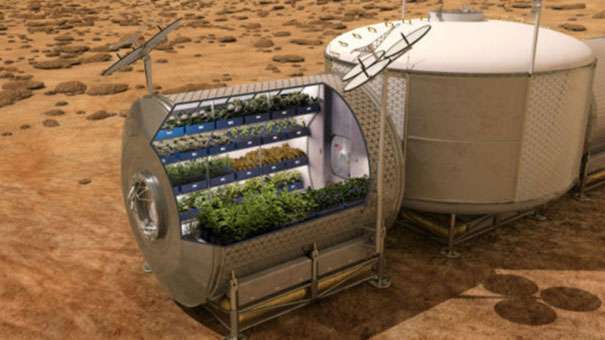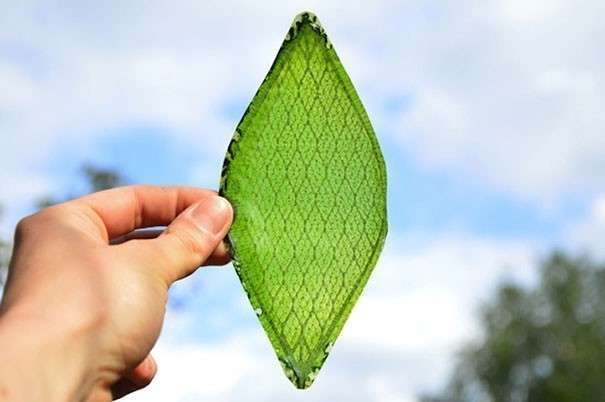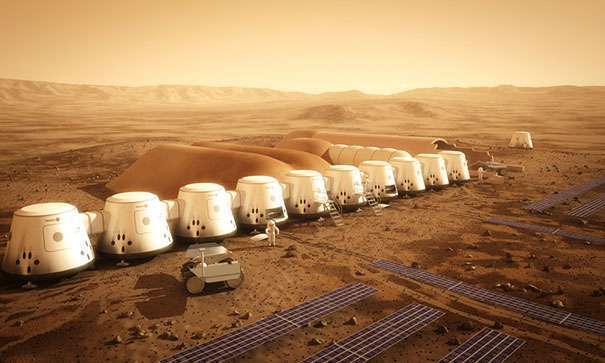Today, in connection with new scientific studies of the planets of the solar system, in which the main news was that water was found on Mars, there are numerous discussions and disputes about the possible colonization of the Red Planet by earthlings. On this basis, people have a lot of questions: “Is it possible to survive on Mars?", “Is it possible to grow plants there?”, “Is it possible to process the water there into oxygen?”, “Is it possible to turn Mars into a new tourist destination in the distant future?” ?
Due to the fact that Mars is located in relative proximity to Earth, its natural characteristics make it the most likely candidate for the creation of human settlements.
Traveling to Mars requires the least amount of energy (not counting Venus). It will take approximately 9 months to get to the Red Planet.
Video about whether there is life on Mars
Why would earthlings colonize Mars?
- The main idea is to create a "cradle of Humanity" in case a global cataclysm occurs on Earth.
- Due to the rich mineral composition of the Martian soil, earthlings are attracted by the possibility of industrial extraction of valuable minerals.
- Creating suitable conditions for human life on the Red Planet can be a good solution to demographic problems.
- If you create a permanent base on Mars, then earthlings will have the opportunity to explore its surface and features in more detail.
The question of the colonization of Mars is of great interest not only to scientists, but also to ordinary people. Today, Robert Zubrin’s guide How to Survive on Mars is very popular. The book describes how to survive on a cold planet. Despite the fact that the narrative has a fantastic genre, it is quite possible that in the future many of the author’s ideas will come true in real life.
Currently, there is only talk about real attempts to fly to Mars . Of course, by combining their efforts and capabilities, the leading space powers could create a research spacecraft and send it to the Red Planet. But without special preparation for Martian conditions, a person who landed on this planet will be doomed to an untimely painful death.
- Even before potential colonizers land on Mars, they will be exposed to radiation. The sun, which is a deadly unpredictable mass, at any moment can release radiation particles into space that can overcome any wall of a spacecraft and any protective suit. As a result, a person will simply fry in his spacesuit.
- If we assume that the astronauts can still avoid radiation and reach the surface of Mars, then due to the low gravitational field, a person risks losing his hearing, his organs may fail, and his heartbeat will become erratic.
- Due to the lack of water and food, stable life on Mars will cost people billions of dollars due to the need to regularly deliver everything necessary there.
Common similarities between Earth and Mars
- A day on Mars lasts almost as long as on Earth – 24 hours 39 and a half minutes.
- The total area of the earth’s land is 29.2% of the total surface of the globe, while the surface of Mars has an area of 28.4% of the area of the Earth.
- Due to the approximately equal inclinations of the axes of both planets, Mars, like the Earth, has a change of seasons, although they change much longer – after all, a year on Mars is 1.88 times longer than on Earth.
- A cold planet has an atmosphere. Of course, it is not as dense as the earth, but still, presumably, it is able to protect against cosmic and solar radiation.
- According to recent NASA research, there is water on Mars, which makes it possible to support life on it.
- The Martian soil has some similarities in chemical composition with the earth, which theoretically suggests the possibility of cultivating plants there.
- Mars is the richest planet compared to other nearby bodies in terms of the chemical composition of minerals.
- Some places on our planet have similar natural conditions with Martian ones. For example, the appearance of some deserts is very reminiscent of Martian landscapes. The equator of Mars in the summer can please with temperatures up to +20 ˚С.
Differences between Earth and Mars
- Due to the Martian gravity, which is 2.63 times less than the Earth, a person can experience serious health problems associated with weightlessness.
- The Red Planet is much colder than Earth. The maximum there can be +30 ˚С on the hottest day at the equator, but in the winter months the temperature at the poles reaches -123 ˚С. At the same time, the surface layer of the atmosphere always has a sub-zero temperature.
Video about whether a person can survive on Mars
- Mars is twice as poor in solar energy as Earth. This is due to its greater distance from the Sun.
- On Mars, there are significant fluctuations in annual temperatures due to the fact that its orbit has a greater eccentricity.
- Due to the too low atmospheric Martian pressure, without a pneumosuit, a person cannot survive there. Therefore, in residential premises it will be necessary to equip locks to maintain the earth’s atmospheric pressure. Also, low pressure does not allow ice to turn into liquid water.
- The atmosphere of Mars is carbon dioxide (95%), and this suggests that plants can be grown on its surface.
- Mars has two moons, Deimos and Phobos.
- The strength of the Martian magnetic field is weaker than on Earth by about 800 times.
- The soil of the Red Planet contains perchlorates, which gives good reason to doubt the possibility of growing plants.
- There is quite a lot of radiation on Mars.
- Low pressure contributes to the boiling of water on Mars even at temperatures above 10C˚. That is, the ice, not having time to melt, is quickly converted into steam.
Can humans survive on Mars?
The biggest problem in achieving such goals is the extremely high cost of flights.
However, in addition to the cost of the flight, people will have to face obstacles such as lack of oxygen, food, low atmospheric pressure, etc.
Already today, scientists and engineers are thinking about how to survive on Mars and are working to create technologies that could solve problems with food, oxygen and housing.
Despite the fact that without protective equipment a person is doomed to instant death, Mars still has much more acceptable conditions for its development compared to other planets.
Growing space vegetables
During the experiment on the ISS, it was proved that growing fresh lettuce and microgreens in space is a very real task. Several types of vegetables were grown in a portable greenhouse, each of which was in its own separate chamber. The harvested crop was consumed with pleasure by the ISS team.
Provided that people at least temporarily live on Mars, they will have to take care of providing their diet with fresh vegetables and herbs. An experiment on the ISS confirmed that such a task could be feasible.
Artificial green oxygen
A fairly large and obvious obstacle standing between man and his possible life on Mars is the lack of oxygen, without which, of course, people immediately die. At the first stages, oxygen can be supplied there in large containers from the Earth. However, a more reasonable and practical solution would still be the production of oxygen directly on Mars. Since the main source of oxygen is plants, and the harsh Martian conditions will not allow them to be grown in sufficient quantities, the scientists decided to create “artificial greenery”. It is assumed that such vegetation will be able to exist due to only two factors – water and light, and the oxygen produced will be suitable for breathing.
Creating the necessary tools
In order to equip the home of a Martian colonist, you need a lot of different items and tools. Thanks to conventional materials and a 3D printer, it is possible to create any tool you need.
Theoretically, scientists suggest that Mars should become an independent source of resources for earthlings in the future, however, it is not yet clear whether science will be able to answer the question, can a person live on Mars?
However, if it turns out that the solution of the question posed is not feasible, then in the Galaxy you can find several tens of billions of planets whose conditions are suitable for life. At least, such a conclusion was made by American scientists who explored space with the Kepler satellite-telescope. The results obtained indicate that approximately 22% of the stars in our Galaxy are planets, the size of which is the same as the size of the Earth. All of these 22% of the planets have favorable temperature conditions suitable for the emergence of biological life.




